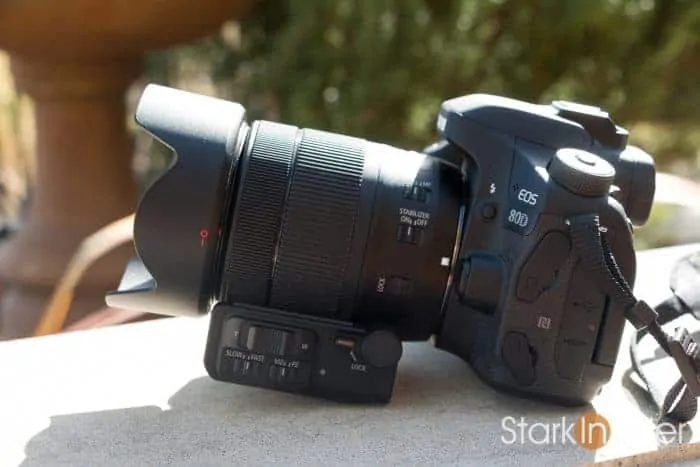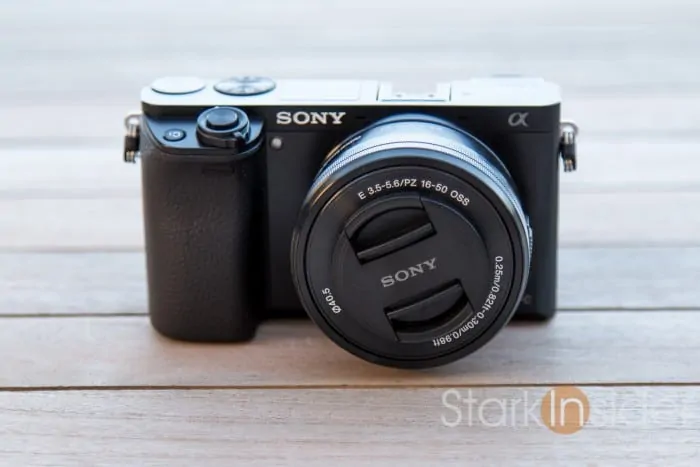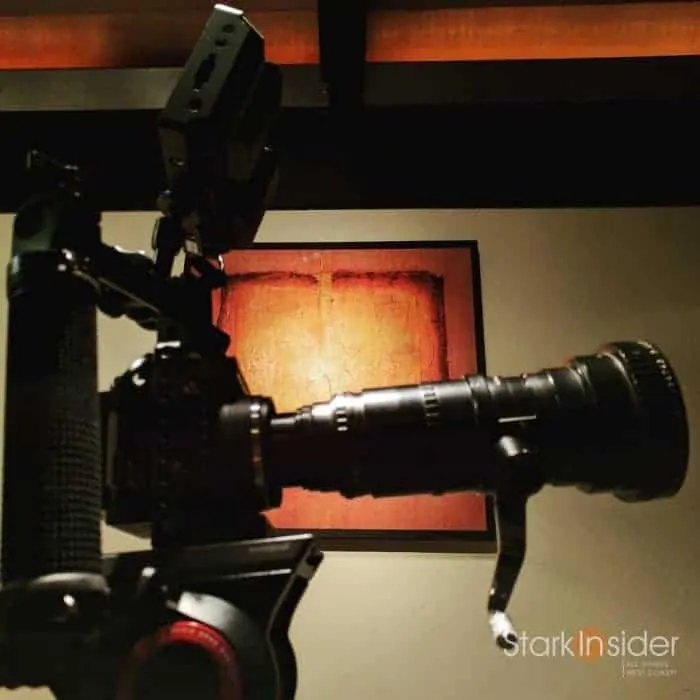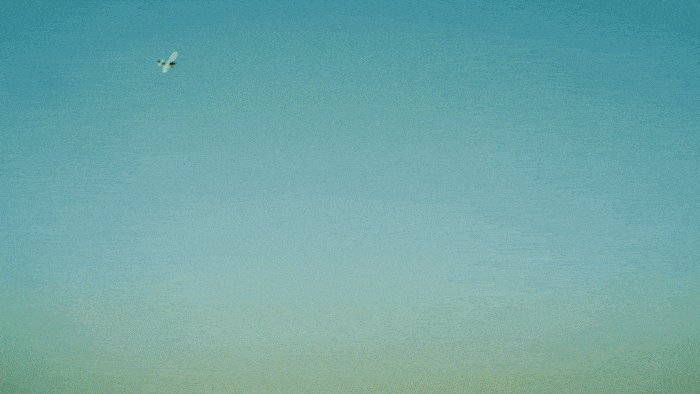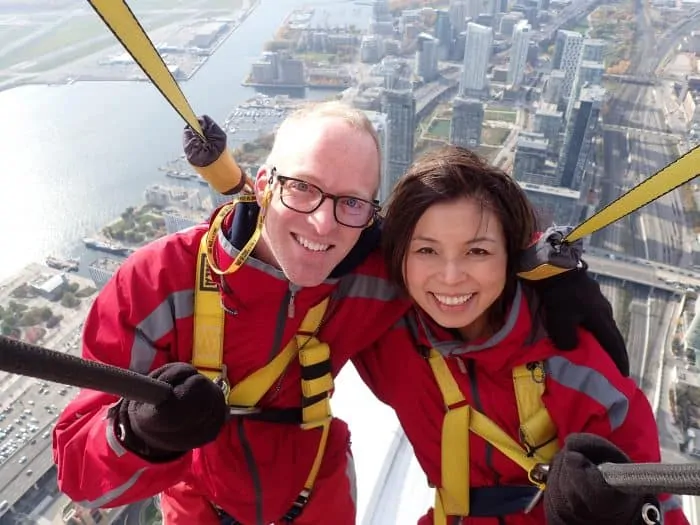
BY CLINTON STARK
For those that have asked about the camera gear that I use to make videos for Stark Insider, or are looking for some ideas about camera models and accessories to buy for video production projects, here’s my list of gear (see below). I hope it helps.
I’ve been shooting for about 12 years now. Mostly on a Canon DSLR camera. But also on RED (Dragon), Blackmagic (Micro Cinema Camera), Sony (a6000, a6500), Panasonic (GH4, GH5) and often whatever iPhone or Android smartphone was at hand.
There really is a lot of amazing camera tech out there.
But, but, but…
Ultimately I believe it comes down to our imaginations. How can we dare to creatively push the envelope? Be different? Yes, failure is an option. But not giving it our best shot (literally) is not. If someone asked me how to get started I’d recall what I did: get out there, hit record and see what happens. And, most importantly, enjoy the journey. Practice, practice, practice. Make mistakes. Learn. And never look back.
Happy shooting! From a guy still on that journey,
Clinton
CAMERAS
Panasonic Lumix GH5
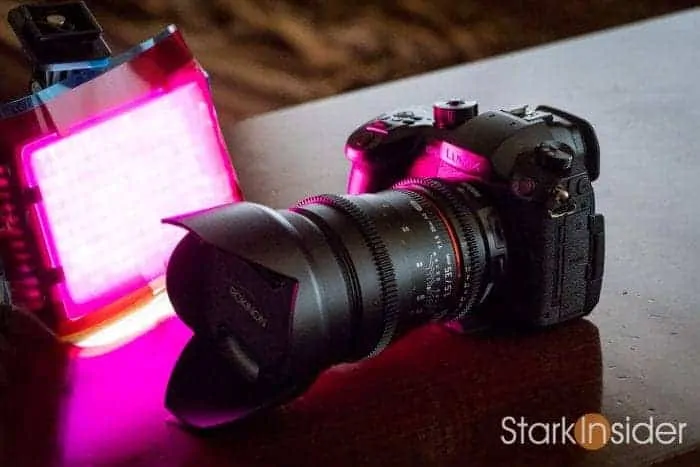
This is the one. When the Panasonic GH5 landed in 2017 the game changed. Panasonic threw just about everything at this one: 4K 10-bit, high frame rates, dual SD slots, available V-log, customizable buttons, outstanding build and ergonomics and UI, all the filmmaking tools you’d need (peaking, waveform, zebras, horizon level, etc.) and some kind of voodoo magic in that IBIS that blows everything else away. You could spend more. But why? (well, okay, I did and explain below). If you’ve followed Stark Insider in recent years you know I praise the GH5 ad nauseam. Turns out others do too. Google a bit. The GH5 is the real deal. A downside? I sometimes find the footage too sharp. So I switch off the in-camera sharpness (I never like any sort of sharpening or noise reduction in camera). Then, shoot V-log and dirty up the image to look like film in post. If I could only own one camera, one that needed to be compact for travel, yet able to capture good quality footage in the studio it would be the Panasonic GH5.
RED Dragon Scarlet-W
I shoot on the RED as much as possible. There’s no in-camera sharpening or noise reduction. Perfect! I like the look. RED feels like a digital approximation of film. Thank the magic that is Redcode. I don’t know how it works — and don’t really want to know. But however it does work, Redcode is magic. You can almost completely blow your exposure and white balance and color on set and magically fix it all back in post (I use Premiere Pro). I get now why people in the industry rave about Redcode. I also like the compression rates so if I want I can shoot 5K and not eat up tonnes of hard drive space. I shoot my Scarlet-W all manual. By the way, given this camera is a few years old you can find used models for a veritable steal. I plan on keeping this one for a long, long time. By the way, another reason we shoot on this RED as much as possible: we had to spend $1,800 for a 480GB memory card. That took some kind of fortitude to click the buy button on that one.
Loni and I shot AND IT HURTS (music by Moby) on Dragon:
Canon Cinema EOS C100 Mark II

Ah, Canon C100. My workhorse. Fantastic image. Files don’t take up too much space. Battery goes for hours. This is a great camera for live events, documentary style shoots, backstage interviews (where it can be dark), and music videos too. Rock solid. A fantastic camera. If Canon ever releases a Mark III or C200 I would buy it in a heartbeat.
Canon EOS 80D

When I want to be discrete I’m usually shooting on a Canon EOS 80D DSLR. I can look like a tourist if I want, and get shots that wouldn’t be possible with a rigged out C100 (or Sony FS5/FS7). Also, I’ve discovered over the years people are often more relaxed in front of a small, friendly DSLR.
Blackmagic Micro Cinema Camera
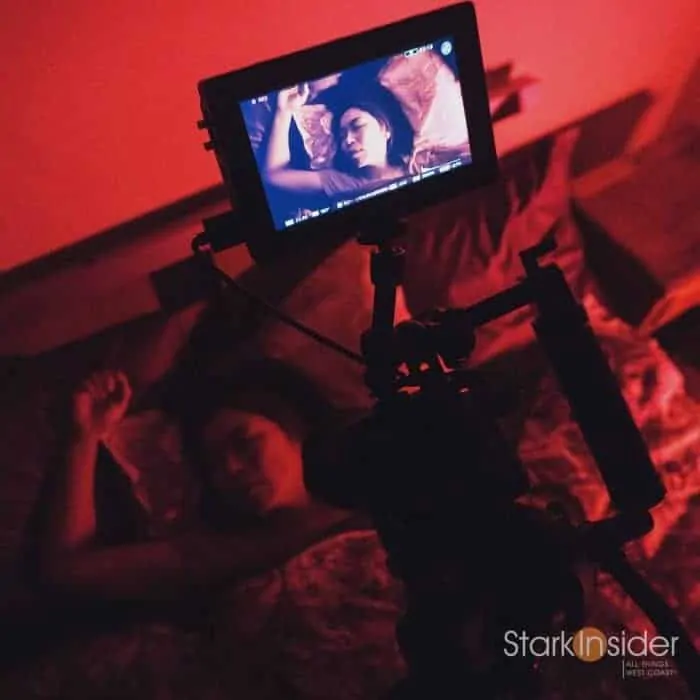
Blackmagic is an interesting company. Based out of Australia, they’re often seen as a poor man’s RED. I love the Super 16 look something like this Blackmagic Micro Cinema Camera (four thirds mount) offers up. It’s small and I’ve rigged it up ever so simply. It doesn’t cost a fortune, and since it uses SD cards, storage is dirt cheap. With the Blackmagic Pocket 4K and 6K cameras and BRAW (Blackmagic RAW) I really think Blackmagic is an outstanding, inexpensive option that will suit many projects.
Sony Alpha a6000

A tiny APS-C camera, the Sony Alpha a6000 is ideal for throwing into a bag, or jacket pocket. Perfect for capturing stills and some basic 1080p video, it’s really an impressive mirrorless camera.
MONITORS
- Atomos Ninja Blade 5″ Monitor & Recorder – inexpensive, runs on standard NP-F batteries, convenient focus/exposure tools
- Blackmagic Video Assist – nice 1080p monitor, works well with Blackmagic cameras
LENSES
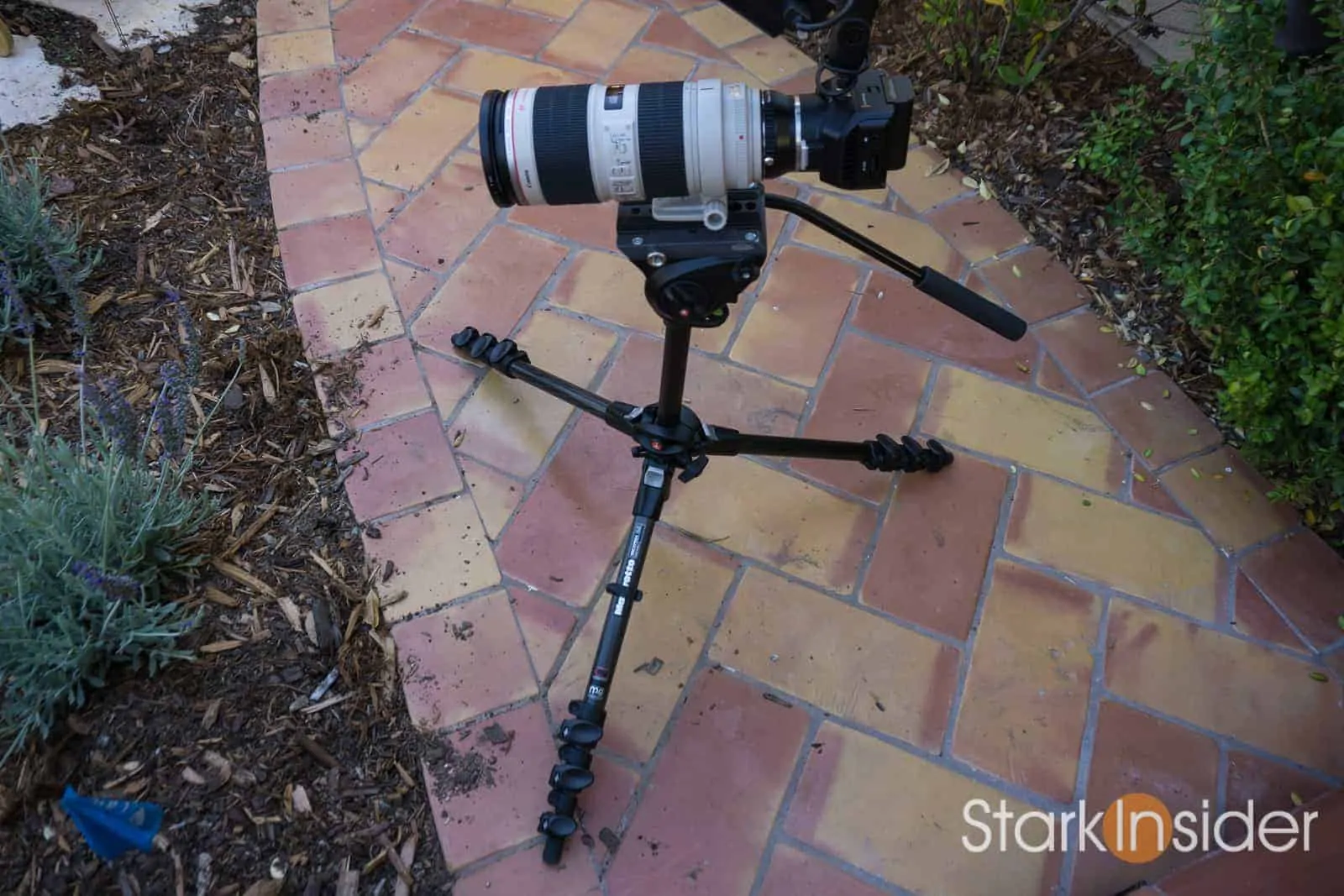
I own about a dozen or so lenses. Mostly Canon. Mostly EF mount. I like EF because it’s virtually universal. You can use them on REDs (like the superb Raven and Scarlet-W) and on Sonys and others with adapters (I like the ones from a company called Metabones).
I highly recommend trying to buy the best glass you can. Unlike camera bodies, lenses tend to hold their value well over time — at least for the good ones.
- Canon 24-105mm f/4 IS USM: handy all-rounder. Good for run-and-gun. I wish it had slightly wider field of view as 24mm on a crop sensor like the C100 and 80D can be tight at times.
- Canon 70-200mm f/2.8 IS II USM: for interviews and landscape shots. Big and heavy. I don’t use it much, but when I do it’s beautiful. My most expensive lens. I waited to get a 30% coupon from Canon and was able to get it at a nice discount. The absolute gold standard in its class.
- Canon 50mm f/1.8 STM: Nifty fifty. Must own. Inexpensive. Small and light, handy for keeping your rig nimble.
- Canon 18-135mm f/3.5-5.6 IS USM: A kit lens. But a fairly good one. Absolutely fantastic auto-focus. And quiet. I used it to shoot BTS segment at Cirque du Soleil’s Luzia show in San Francisco.
- Sigma 18-35mm f/1.8 Art DC HSM: Gorgeous! Believe everything you’ve read about this beauty. It really is like 3 primes in 1 (18/24/35). There’s no stabilization so make sure you have support or if you shoot near wide open at high frame rates you can be okay. Shooting a music video or short film? This is a great choice regardless of budget. I recently also bought the 50-100mm version of this ART lens. I use these two and three Rokinon primes as my main lenses now that we’re doing more studio work and less run-and-gun (where zooms make more sense).
- Tokina 11-20mm f/2.8 Pro DX: Wide angle. It’s okay, I don’t use it much. Low on my list if I were building out a kit for first time. If you’re a landscape shooter, however, your priorities may be different.
- Rokinon 85mm Cine t/1.5 with De-Clicked Aperture: Pretty bokeh! All manual. Inexpensive. I use it for special moments. It can give videos a high end and dreamy look. Really fun to use. I also like the Rokinon 35mm and 50mm. The trio makes for a nice combo for shooting artsy video projects.
- Panasonic 12-35mm MFT mount: For my GH5 when I want a compact travel kit. Highly recommended, but not the best in low light — in those situations use a Metabones Speedbooster + Sigma 18-35mm f/1.8 Art.
- Angenieux 12-120mm: Because. French New Wave. I love the ’60s films that came out of France from directors like Jean-Luc Godard (Breathless), and out of Sweden too from the likes of Ingmar Bergman (Persona). This lens was used by many during that time. So, I had to have one! It works well, looks pretty, and even has a crank — cigarettes optional. Priceless! I can use it on a Blackmagic camera (or anything with a Micro Four Thirds mount) with an adapter, like so:
AUDIO
- Shotgun Microphone: Sennheiser MKE600 and Rode Videomic Pro
- Field Recorders: Zoom H6 and Tascam DR-05
- Voiceover Setup: Shure SM7B and Zoom F4 Recorder
- Interview Microphones: Zoom H1 with a Countryman lavalier
LIGHT
- On camera panel when needed: Genaray 6500T LED
- Extra lighting panels: Neewer CN-160 LED
STABILIZATION
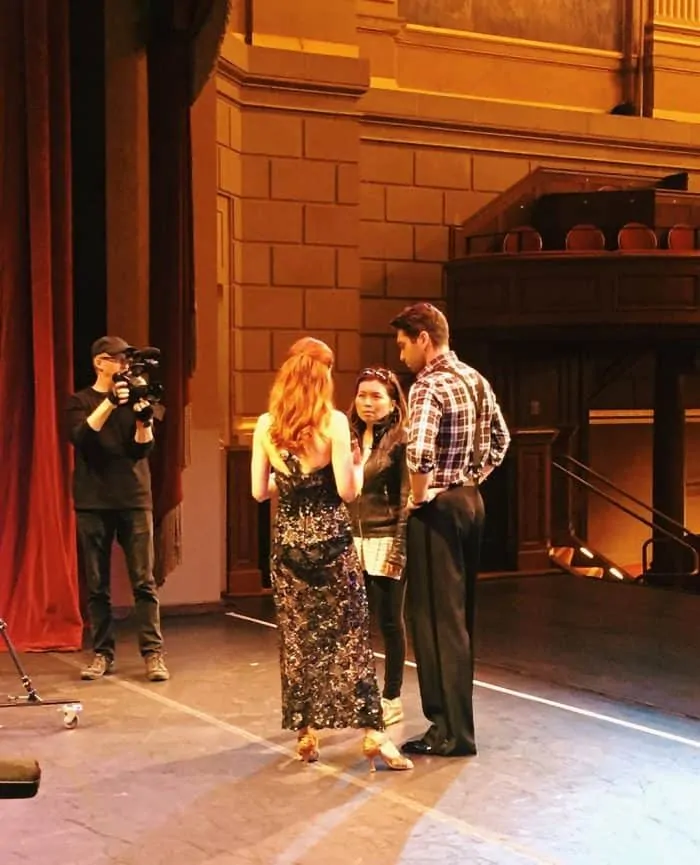
I’m not a drone or gimbal kind of shooter. I like handheld, tripod or dolly. Drone shots can be great, but is it worth the hassle of all the extra gear, batteries, cost, time and effort? For me, no. Instead of spending $1,500-2,000 to buy a decent entry drone, and then learning it all, I instead allocate some budget each year and license what I need. So easy. I just review all the footage and b-roll options out there, pick my favorite, and license it for $60-80. Done!
SOFTWARE
I live on the cloud — or is that in the cloud? The Creative Cloud. I spend most of my time in Adobe Premiere Pro. It’s all I’ve ever edited in. If I had started in Final Cut I’d probably be using that today. I’ve dabbled in Blackmagic’s DaVinci Resolve and think that’s a great option too.
- Editing: Adobe Premiere Pro
- Sound: Adobe Audition (though I tend to mostly use the built-in sound tools in Premiere and only need Audition when something needs serious fixing or a special sound effect)
- Images: Adobe Illustrator / Adobe Lightroom
- Special Effects: Adobe After Effects (rarely, and I’m terrible at it)
- Plugins: Neat (for noise reduction), Twixtor (for processed slow motion after the fact) and FilmConvert (for that pretty grain effect and filmic look)
Recommended Filmmaking and Videography Resources
- Must-read for aspiring filmmakers with no money (i.e. everyone): Rebel without a Crew: Or How a 23-Year-Old Filmmaker With $7,000 Became a Hollywood Player by Robert Rodriguez (my review here on Stark Insider)
- On the art and science of film editing: In The Blink of an Eye by Walter Murch (a classic, so insightful!)
- Low-cost filmmaking course: Masterclass Werner Herzog Teaches Filmmaking (also my review – it’s entertaining and informative, but I’m not suggesting this online course could actually replace a real filmmaking school)
3 Things Aspiring Filmmakers and Videographers Should Know
- Cinematography – composition, camera movement, lenses.
- Editing – timing, structure, types of edits and when to use them.
- What makes people tick – motivation, interest, human element.
Videos by Clinton Stark
LUZIA BY CIRQUE DU SOLEIL
Shot on Canon EOS Cinema C100 II with Canon 18-135mm
WRONG’S WHAT I DO BEST (San Francisco Art Institute)
Shot on Canon 70D with Canon 18-135mm and Sigma 18-35mm
MOVIE STAR
Shot on Blackmagic Micro Cinema Camera with Panasonic Lumix 12-35mm
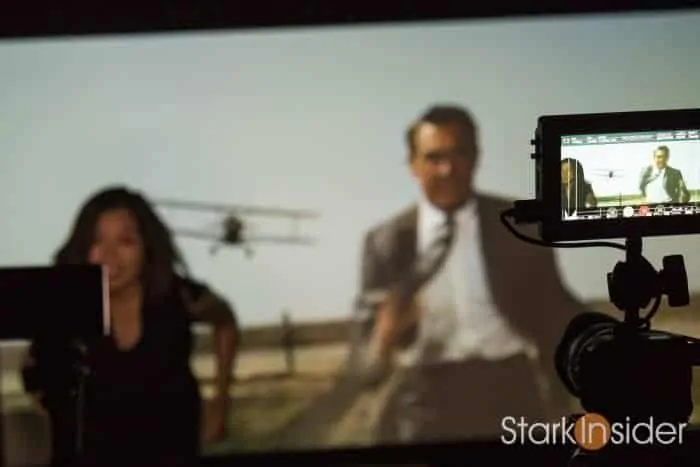
All American Apple Pie
Shot on RED Raven with Sigma 18-35mm, a wig, a willing wife, and fake blood.
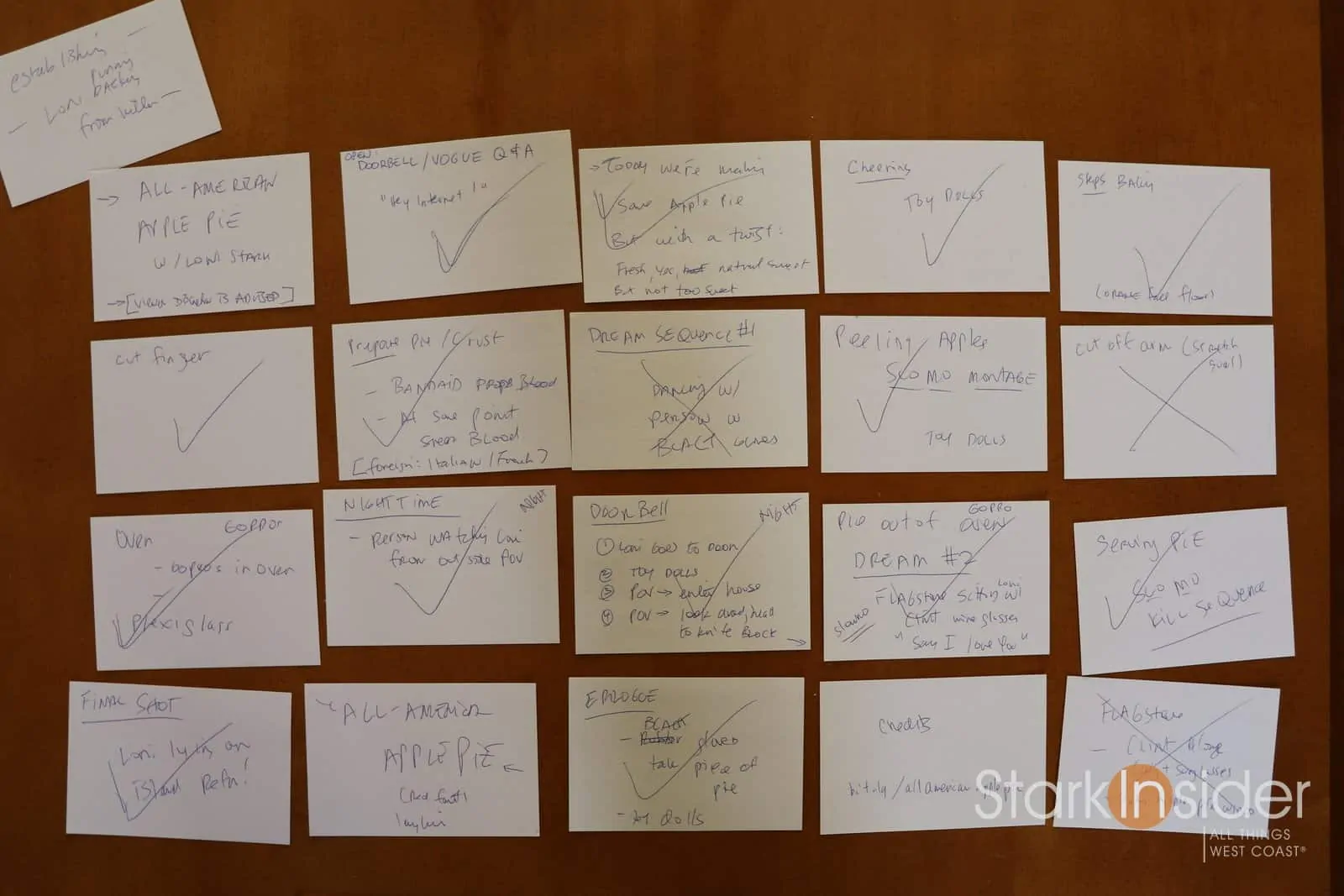
Poco a Poco: Don’t Be “That One”!
Final parting thought.
You know when you go to the gym (or maybe to play basketball, football, or to dance, or to golf … or whichever analogy works for you…!) and there’s always that person? The one with shiny new gear. All of it. It’s as if they headed to the store moments earlier, and just bought everything off the rack. I’m sure, at one time or another, we’ve all done it. When it comes to camera gear I’d say less is more. Yes, the above gear is quite extensive. Many pros out there have more, and many have less. It depends on where you are in your career and what types of projects you’re shooting. I started with a Canon EOS Rebel T2i. I couldn’t afford anything else 12 years ago. I used it everyday. Tossed it around. Shot like mad. Loved it. Slowly, very slowly I added new kit. I budgeted year over year … to buy a lens here, a new microphone there. Over time I’d upgrade when I had enough money (never financing). Going slow meant I had time to learn my gear, and get incrementally better at not only operating cameras and accessories, but also at the art of videography and filmmaking.
As someone in the Baja once said to me, “poco a poco” or little by little. Baby steps. So, yes, let’s not try to be that super shiny star on the Yoga mat at the local gym. Go slow, learn as you go. Enjoy the process!
Happy shooting!
Clinton


